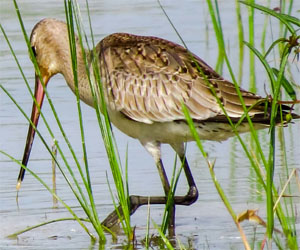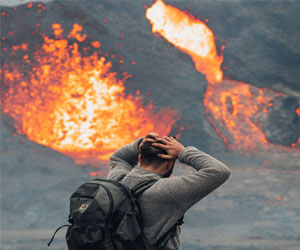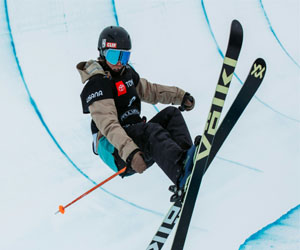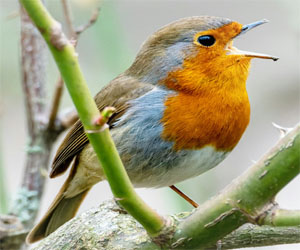


Riding The Waves Of Adventure

Ocean surfing, often referred to as the "sport of kings," is a heart-pounding water activity that unites the raw power of the ocean with the graceful skill of the surfer. It's an adrenaline rush like no other, and those who have tasted the thrill of riding the waves know that it's an experience that is hard to put into words.
At its core, ocean surfing is a dynamic dance between man and the ocean's mighty waves. It's an awe-inspiring display of athleticism, courage, and connection with nature. The thrills of ocean surfing are many, and they are what draw surfers from all corners of the globe to seek out the perfect wave.
One of the most exhilarating aspects of ocean surfing is the pure force of the waves. As surfers paddle out to meet the ocean, they are met with the raw power of the sea. Waves can rise to towering heights, their roars drowning out everything else. The surfer must harness this energy and use it to propel themselves forward, catching a wave at just the right moment. It's a delicate balance between challenge and exhilaration.
The thrill of riding a wave, once caught, is indescribable. It's a rush that surges through every cell of the surfer's body. The moment they pop up onto their board and begin to ride the face of the wave, a sense of freedom and ecstasy takes over. It's a unique feeling of weightlessness and connection with the ocean, a moment where time seems to stand still.
Each wave is different, offering its own unique set of thrills. Some waves are fast and powerful, requiring surfers to make split-second decisions. Others are long and mellow, allowing for a more leisurely ride. Then, there are the barrel waves, where the surfer is completely enclosed by the curling wave - a heart-pounding experience akin to being in a water tunnel.
Surfing is not just about physical thrills; it's also about mental focus and being in the moment. Surfers need to read the waves, anticipate their movements, and adjust their position and balance accordingly. This mental challenge adds another layer of excitement to the experience.
The ocean itself is a formidable opponent, and surfers must respect its power. The unpredictability of the sea, changing tides, and varying wave patterns create an environment where every session is a new adventure. The constant learning and adaptation keep the thrills of ocean surfing fresh and exciting, no matter how experienced a surfer becomes.
The thrills of ocean surfing are as diverse and vast as the open sea itself. The raw power of the waves, the sense of freedom, the mental and physical challenges, and the ever-changing nature of the ocean make it a sport like no other. For those who have fallen in love with riding the waves, it's a lifelong pursuit of adventure and a profound connection with the natural world. So, if you're seeking an experience that will quicken your heart and awaken your soul, consider giving ocean surfing a try. It's a journey that promises endless thrills and an indescribable connection to the majestic power of the sea.
A Synergistic Relationship
 Fostering A Love For Nature: Birdwatching introduces people to the beauty and wonder of the avian world. It's a gateway to a lifelong love affair with nature. By fostering an appreciation for birds and their habitats, birdwatching enthusiasts are more likely to become advocates for conservation.
Fostering A Love For Nature: Birdwatching introduces people to the beauty and wonder of the avian world. It's a gateway to a lifelong love affair with nature. By fostering an appreciation for birds and their habitats, birdwatching enthusiasts are more likely to become advocates for conservation.
Citizen Science: Birdwatchers often contribute to valuable citizen science projects. Organizations like the Audubon Society and eBird encourage birdwatchers to record their sightings and observations. These data provide crucial insights into bird populations, migration patterns, and habitat trends, aiding in scientific research and conservation planning.
Monitoring Bird Populations: Birdwatchers, with their keen eyes and field experience, are excellent at monitoring bird populations. They can detect fluctuations in bird numbers, identify rare or threatened species, and report unusual events like mass migrations or bird die-offs. This information is vital for conservationists to understand the health of ecosystems.
Habitat Protection: Birdwatchers often advocate for the preservation of important bird habitats. Birding communities and organizations engage in campaigns to protect critical nesting areas, stop deforestation, and promote the establishment of nature reserves. This grassroots effort can have a significant impact on local and global conservation initiatives.
Embracing The Thrill Of The Trail
 The heart-pounding experiences in mountain biking often begin with the sheer unpredictability of the trail. Unlike the smooth, well-paved roads of traditional cycling, mountain biking trails present riders with a dynamic range of obstacles. From rocky paths and tight switchbacks to steep drops and roots to navigate, the excitement lies in the unpredictability of each ride. It's this element of surprise that keeps the heart racing and the senses heightened.
The heart-pounding experiences in mountain biking often begin with the sheer unpredictability of the trail. Unlike the smooth, well-paved roads of traditional cycling, mountain biking trails present riders with a dynamic range of obstacles. From rocky paths and tight switchbacks to steep drops and roots to navigate, the excitement lies in the unpredictability of each ride. It's this element of surprise that keeps the heart racing and the senses heightened.
One of the most thrilling aspects of mountain biking is conquering challenging terrains. Riders push themselves to their limits, testing their endurance and technical prowess. The climb up a steep hill can be grueling, but the sense of accomplishment at the summit is unparalleled. Descending down a rocky slope with precision and control is a heart-pounding experience that combines fear and excitement, often resulting in an adrenaline high.
Steep descents, in particular, are a hallmark of heart-pounding mountain biking. These exhilarating moments put riders on the edge of their seats as they negotiate sharp declines, often featuring rocks, drops, and obstacles. The focus required to maintain control while descending at high speeds is intense, making it a heart-pounding adventure that demands unwavering concentration.
Another heart-pounding element of mountain biking is taking on technical features like jumps and drop-offs. These challenges require riders to become airborne, adding an element of thrill and danger. The rush of adrenaline that comes from launching off a jump and successfully landing is a sensation that many riders chase and savor.
Embracing The Thrill Of The Unknown
 Rekindling Curiosity: Rediscovering the art of exploration is about rekindling curiosity, embracing the unknown, and seeking out new experiences. It's a reminder that there is always more to learn, discover, and understand, both about the world and ourselves.
Rekindling Curiosity: Rediscovering the art of exploration is about rekindling curiosity, embracing the unknown, and seeking out new experiences. It's a reminder that there is always more to learn, discover, and understand, both about the world and ourselves.
Exploring The Familiar And Unfamiliar: Exploration doesn't always require venturing into remote wilderness or uncharted waters. It can start with exploring the familiar places around us. Take a different route to work, visit a neighborhood you've never been to, or try a new cuisine. Familiar exploration can help cultivate a sense of wonder and openness to the world.
Embracing The Thrill Of The Unknown: One of the most enticing aspects of rediscovering the art of exploration is the thrill of the unknown. Whether it's a spontaneous road trip, a journey into the wilderness, or delving into a new field of study, the exhilaration of stepping into uncharted territory is invigorating.
Facing Challenges And Overcoming Obstacles: Exploration often involves facing challenges and overcoming obstacles. These trials not only build resilience but also lead to personal growth. The lessons learned while navigating through unfamiliar situations can be transformative.
Connection With Nature: Exploration frequently involves connecting with nature, whether it's hiking through forests, diving into the depths of the ocean, or stargazing in remote locations. This connection with the natural world can be spiritually fulfilling and grounding.






Unleashing The Thrill Of The Mountain
 2. Ollies And Nollies: Ollies are versatile tricks where the rider pops the board into the air by shifting their weight and pushing down on the tail. Nollies are similar but initiated by pushing down on the nose. These tricks are the foundation for more advanced maneuvers and add an element of creativity to your riding.
2. Ollies And Nollies: Ollies are versatile tricks where the rider pops the board into the air by shifting their weight and pushing down on the tail. Nollies are similar but initiated by pushing down on the nose. These tricks are the foundation for more advanced maneuvers and add an element of creativity to your riding.
3. Spins: Spinning is a dynamic component of snowboarding stunts. Start with 180-degree spins (half-cab) and work your way up to 360s, 540s, and even 720s. The key is using your upper body to initiate the spin while keeping your lower body aligned with the board.
4. Flips And Inverts: Flips and inverts take snowboarding to the next level. Tricks like backflips and front flips involve rotating your body while airborne. Inverts, such as handplants or hand drags, add an acrobatic twist to your riding. These tricks demand skill, precision, and a fearless spirit.
5. Rails And Boxes: Terrain park features like rails, boxes, and wallrides provide opportunities for grinding tricks. Practice slides, presses, and jibs on these features to enhance your trick repertoire. Sliding down a rail with style requires balance, precision, and confidence.
6. The 720 And Beyond: Mastering the 720 is a significant milestone for snowboarders. A 720 is a double spin where you complete two full rotations in the air. Once you've conquered the 720, you can explore more advanced spins like the 900 or even the elusive 1080.
7. Halfpipe Tricks: The halfpipe is a haven for advanced snowboarders. Here, you can attempt aerial tricks and spins.
 Rest And Immobilization: In many cases, rest and immobilization are necessary to allow the body to heal. This might involve using crutches, slings, or braces. The duration of rest depends on the injury, but it's crucial not to rush back into physical activity.
Rest And Immobilization: In many cases, rest and immobilization are necessary to allow the body to heal. This might involve using crutches, slings, or braces. The duration of rest depends on the injury, but it's crucial not to rush back into physical activity.
Physical Therapy: Physical therapy is often a cornerstone of sports injury recovery. A physical therapist can design a personalized plan to strengthen muscles, improve mobility, and restore functionality. They guide athletes through exercises that target the affected area.
Pain Management: Managing pain is a critical aspect of recovery. This may involve over-the-counter pain relievers or prescribed medications. However, athletes should follow their healthcare provider's advice on pain management to avoid potential risks.
Rehabilitation Exercises: Incorporating rehabilitation exercises into the recovery plan helps in restoring strength and flexibility. These exercises are progressive, gradually increasing in intensity as the injury heals. Athletes should perform them under the supervision of a physical therapist or trainer.
Nutrition And Hydration: A well-balanced diet rich in nutrients is essential for the body's healing process. Adequate protein, vitamins, and minerals support tissue repair and growth. Staying hydrated is equally crucial.
Gradual Return To Activity: Athletes must follow a gradual return-to-sport plan. Rushing back into strenuous activity can lead to reinjury. This plan should be developed with a healthcare provider or trainer and include a step-by-step progression.